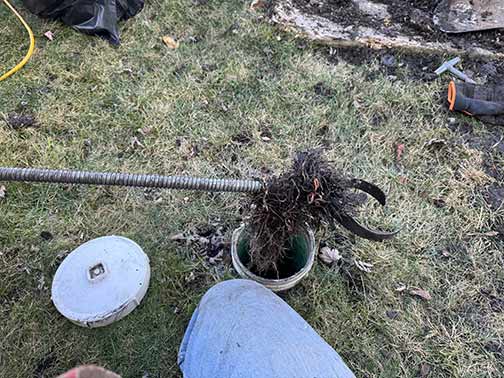
Chicago, known for its beautiful tree-lined streets, faces a unique challenge: the conflict between tree roots and underground pipes. As trees grow, their roots spread out in search of nutrients and water, often encountering and damaging underground pipes. This ongoing issue has significant implications for the city’s infrastructure, environment, and residents. Here we get into the nature of this conflict, its impact, and the strategies employed to address it.
The Importance of Urban Trees in Chicago
Urban trees play a crucial role in enhancing the quality of life in Chicago. They provide shade, reduce urban heat islands, improve air quality, and offer aesthetic and psychological benefits to residents. Additionally, trees contribute to the city’s biodiversity and help manage stormwater by absorbing rainfall. The value of trees in urban environments cannot be overstated, making it essential to find a balance between preserving these natural assets and protecting underground infrastructure.
The Role of Underground Pipes in Chicago’s Infrastructure
Underground pipes are vital components of Chicago’s infrastructure. They carry water, sewage, and gas, ensuring the city’s smooth functioning. These pipes are often located beneath streets, sidewalks, and private properties, making them susceptible to damage from tree roots. When tree roots infiltrate sewer pipes, they can cause blockages, leaks, and even complete pipe failure, leading to costly repairs and potential disruptions to essential services.
How Tree Roots Interact with Underground Pipes
Tree roots naturally seek out moisture and nutrients, which are often found in the soil surrounding underground pipes. As roots grow and expand, they can penetrate small cracks or joints in pipes, gradually enlarging these openings and causing significant damage. The interaction between tree roots and pipes is influenced by various factors, including tree species, soil conditions, and the age and material of the pipes.
Common Tree Species in Chicago That Affect Underground Pipes
Certain tree species are more likely to impact underground pipes due to their aggressive root systems. In Chicago, common culprits include:
- Silver Maple
- Willow
- Poplar
- Sycamore
- Elm
These species are known for their fast-growing and extensive root systems, which can easily infiltrate and damage underground pipes.

The cumulative effect of tree root damage can strain the city’s budget and resources, highlighting the need for effective management strategies.
The Impact of Tree Root Damage on Chicago’s Infrastructure
The damage caused by tree roots to underground pipes can have far-reaching consequences for Chicago’s infrastructure. Blocked or broken pipes can lead to sewage backup emergencies, water leaks, and gas leaks, posing health and safety risks to residents. Additionally, repairing or replacing damaged pipes is often expensive and disruptive, requiring excavation and temporary road closures. The cumulative effect of tree root damage can strain the city’s budget and resources, highlighting the need for effective management strategies.
Strategies for Managing Tree Roots and Underground Pipes
To address the conflict between tree roots and underground pipes, Chicago employs several strategies, including:
- Tree Selection and Placement: Careful selection and placement of tree species can help minimize root-related damage. Planting trees with less aggressive root systems and maintaining a safe distance from underground pipes can reduce the risk of infiltration.
- Root Barriers: Installing root barriers during tree planting can prevent roots from reaching underground pipes. These barriers are typically made of plastic or geotextile fabric and are placed vertically in the soil to redirect root growth away from pipes.
- Pipe Materials and Installation Techniques: Using durable pipe materials and modern installation techniques can enhance the resilience of underground pipes. For example, PVC and HDPE pipes are more resistant to root penetration compared to older materials like clay or cast iron.
- Regular Maintenance and Inspection: Routine inspection and maintenance of underground pipes can help identify and address root-related issues before they become severe. Techniques such as sewer camera inspections and professional hydro-jetting services can be used to detect and remove root intrusions.
- Collaboration Between City Departments: Effective communication and collaboration between city departments responsible for trees and infrastructure can ensure a coordinated approach to managing tree roots and underground pipes. This includes sharing information on tree planting plans, pipe locations, and maintenance schedules.
Innovative Solutions to Tree Root and Underground Pipe Conflicts
Innovative solutions are being explored to address the ongoing conflict between tree roots and underground pipes. Some emerging approaches include:
- Advanced Root Barrier Technologies: New materials and designs for root barriers are being developed to improve their effectiveness and durability. For example, some barriers now incorporate chemical inhibitors that deter root growth.
- Smart Pipe Systems: Integrating sensors and monitoring technology into underground pipes can provide real-time data on root intrusion and pipe condition. This allows for proactive maintenance and timely intervention to prevent significant damage.
- Biological Controls: Research is being conducted on biological methods to control root growth, such as using specific fungi or bacteria that inhibit root expansion without harming the tree.
- Community Engagement and Education: Educating residents about the importance of proper tree planting and maintenance can help reduce the risk of root-related pipe damage. Community programs that promote tree stewardship and awareness of underground infrastructure can foster a collaborative approach to managing this issue.
The Future of Urban Tree and Infrastructure Management in Chicago
As Chicago continues to grow and evolve, the management of urban trees and underground infrastructure will remain a critical concern. Balancing the benefits of urban trees with the need to protect essential services requires ongoing innovation, collaboration, and investment. By adopting proactive and adaptive strategies, Chicago can ensure the health and vitality of its urban forest while safeguarding its infrastructure for future generations.
In Conclusion
The conflict between tree roots and underground pipes in Chicago is a complex and ongoing challenge. However, with careful planning, innovative solutions, and collaborative efforts, it is possible to mitigate the impact of tree roots on underground infrastructure. By valuing both the trees and the essential services provided by underground pipes, Chicago can continue to thrive as a green and resilient city.



